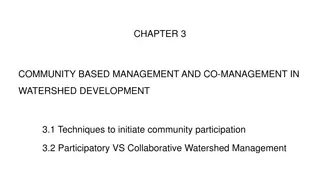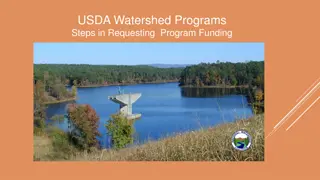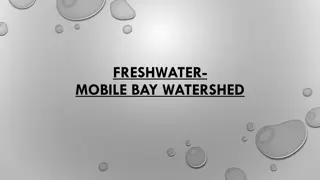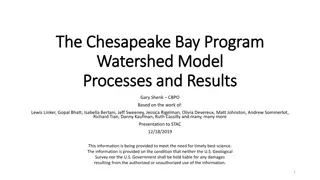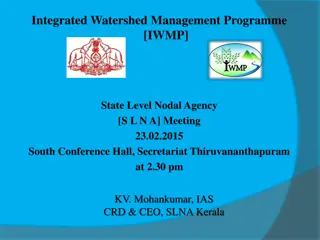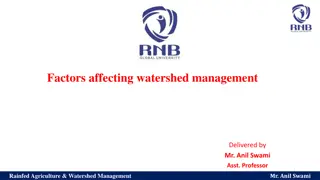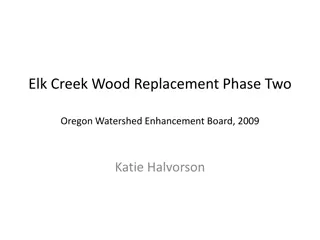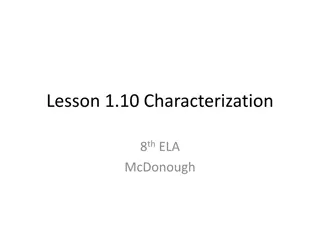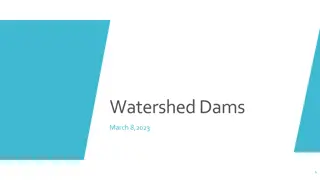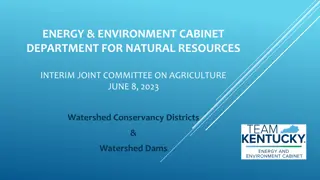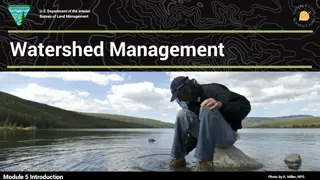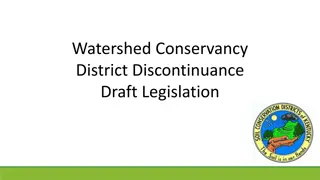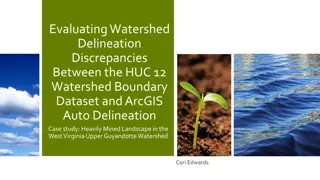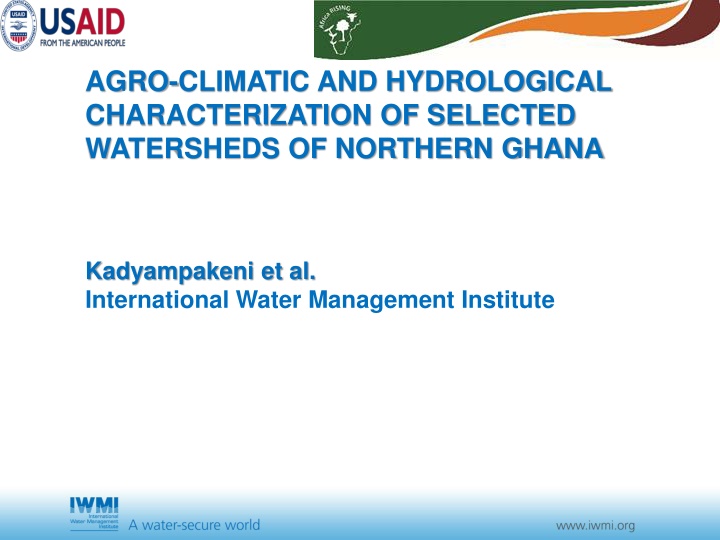
Agro-climatic and Hydrological Characterization of Northern Ghana Watersheds
Explore the agro-climatic and hydrological aspects of selected watersheds in Northern Ghana to support agricultural intensification. The research examines water management interventions, seasonal rainfall patterns, and mitigation strategies for dry spells to enhance agricultural productivity in the region.
Download Presentation

Please find below an Image/Link to download the presentation.
The content on the website is provided AS IS for your information and personal use only. It may not be sold, licensed, or shared on other websites without obtaining consent from the author. If you encounter any issues during the download, it is possible that the publisher has removed the file from their server.
You are allowed to download the files provided on this website for personal or commercial use, subject to the condition that they are used lawfully. All files are the property of their respective owners.
The content on the website is provided AS IS for your information and personal use only. It may not be sold, licensed, or shared on other websites without obtaining consent from the author.
E N D
Presentation Transcript
AGRO-CLIMATIC AND HYDROLOGICAL CHARACTERIZATION OF SELECTED WATERSHEDS OF NORTHERN GHANA Kadyampakeni et al. International Water Management Institute
INTRODUCTION AND OBJECTIVES Agriculture is the mainstay of livelihoods of people in northern Ghana There is enormous potential for expanding irrigated and cropped area through irrigation and other agricultural interventions Watershed Communities Anyari Nyangua, Dimbasinia, Tekuru Zanlerigu Zanlerigu Bihinaayili Bihinaayili, Duko Aim: To develop baseline information for intended water management interventions for agricultural intensification in three watersheds in northern Ghana (Anyari, Zanlerigu and Bihinaayili).
RESEARCH APPROACH Desktop study was conducted to obtain secondary data and information on the hydrological, climatic and agricultural systems. Samples* Watershed Water source Volume (m3) Depth (m) April 2015 yes No October 2015 Yes Yes Baseline information collected on watershed boundary, soil types, land cover Analysing climatic data (Navrongo, Tamale and Zuarungu stations) Dry spells Rainfall deficit Nyangua Reservoir 25,000 Dimbasinia Reservoir Nyangua Permanent wells Dimbasinia Temporal wells Zanlerigu Reservoir Zanlerigu Temporal wells Bihinaayili Libya Reservoir Duko wells Anyari 10 10 25,000 10-20 yes Yes 10 8-12 yes No 10 Zanlerigu 20,000 yes Yes 10 2-5 yes No 10 10** 10 5,800,000 yes No Yes Yes Permanent 5-8 Field visits collecting information on Validation of agricultural systems (focus group discussion Water quality of selected water sources (see table) and soil chemical properties of farm lands to assess their suitability for irrigation
MAIN RESULTS AND DISCUSSION Seasonal rainfall 989-1012 mm/yr No significant trends observed except for increasing trend for PET in the Bihinaayili watershed. Only 3 months per year does rainfall exceed PET Dry spells of 7-days or more occurs more than 80% of the time Navrongo 81.25 4.17 2.08 Zuarungu 80.30 15.15 6.06 Tamale 89.80 12.24 0.00 7-day (%) 14-day (%) 21-day (%) On-field water management in combination with supplemental irrigation or installation of water storage technologies in the rain-fed systems can mitigate the impact of dry spells to improve yield levels.
MAIN RESULTS AND DISCUSSION Water quality (water sources) Higher concentrations of parameters are found in wells than in surface water bodies High Potassium concentrations are found across sites, associate with slash and burn practices by farmers Higher concentrations found in April compared to October Soil quality (farmer field plots) Low organic carbon levels pH levels in Bihinaayili, Nyangua and Tekuru are slightly acidic Low nutrients; need for integrated soil fertility management
MAIN RESULTS AND DISCUSSION Three cropping systems are practiced mixed cropping (not in Anyari), inter-cropping, and crop rotation Irrigation in the three sites is done between December-June. Sources of water Anyari Zanlerigu Bihinaayili Surface water Two small reservoirs (25,000m3) fall dry at the end of the season Small reservoir 20,000 m3 does not fall dry (higher concentrations) Libga reservoir (5.8 Mm3) - perenial Groundwater Shallow wells Shallow wells Shallow wells (domestic)
CONCLUSION The three watershed are highly suitable for agricultural water management interventions Utilizing various water source, shallow wells and small reservoirs with good water quality Soil is conducive but will require integrated management of soil fertility High probability of dry spell occurrences affecting rainfed farming systems Better on-field water management in combination with supplemental irrigation or installation of water storage technologies needed to improve yield levels. For successful sustainable intensification, farmers need support in developing appropriate agricultural water management strategies to attain productivity.

